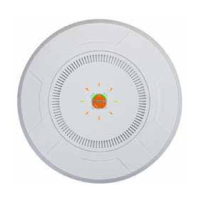
Do you have a question about the Xirrus XR Series and is the answer not in the manual?
| Model | XR Series |
|---|---|
| Category | Wireless Access Point |
| Wi-Fi Standards | 802.11a/b/g/n/ac |
| PoE Support | Yes |
| Power over Ethernet (PoE) | 802.3af/at |
| Beamforming | Yes |
| Humidity | 5% to 95% non-condensing |
| Antenna Type | Internal |
| Wi-Fi Technology | 802.11ac |
| Frequency Band | Dual Band |
| Frequency Bands | 2.4 GHz, 5 GHz |
| Ethernet Ports | Gigabit Ethernet |
| Security | WPA, WPA2 |
| MIMO Technology | 4x4 MIMO |
| Management | CLI, SNMP |
| Mounting | Ceiling, Wall |
| Number of Radios | 2 |
Introduces the Xirrus family of products, including High Density Wireless Access Points and management systems.
Highlights the product's advantages in capacity, coverage, performance, and ease of use.
Describes powerful functionality packages like RF Performance Manager, Security Manager, and Analysis Manager.
Lists hardware and services required for wireless AP deployment and network connectivity.
Provides guidelines for planning Xirrus Wireless AP deployment for optimal coverage and performance.
Covers placement options, RF patterns, cell sizes, area calculations, roaming considerations, and channel allocations.
Illustrates the step-by-step process for successfully installing and configuring the AP.
Provides information on AP interfaces, IAPs, serial numbers, and configuration details.
Displays network interface settings, map, spanning tree status, routing, ARP, DHCP, and connectivity.
Includes IAP monitoring, spectrum analyzer, rogues, channel history, and radio assurance.
Provides instructions on how to access the WMI via a web browser using hostname or IP address.
Explains how changes are applied and saved, emphasizing the need to click Save for persistence.
Guides through initial AP configuration, including SSIDs and security settings, for basic functionality.
Details network administration accounts, ACLs, management, encryption, authentication, and RADIUS settings.
Allows review of SSID assignments, security, QoS, and VLAN parameters for each SSID.
Explains how to establish a secure CLI connection using SSH utilities like PuTTY.
Introduces the root command prompt and basic command entry for AP configuration.
Covers software images, configuration management, diagnostics, and network tools.
Provides an API interface for reading status, statistics, and settings from the AP.
Provides factory default settings for host name, network interfaces, and server settings.
Offers guidance on resolving technical issues, including common hints and troubleshooting tips.
Details features for AP configuration to assist in meeting PCI DSS standards for sensitive data security.
Outlines steps for implementing FIPS 140-2, Level 2 security requirements on the AP.